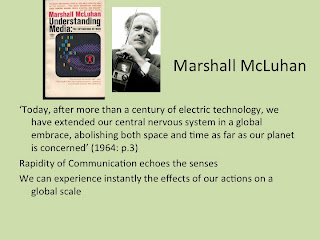Discuss this quote with reference to one work of art and one work from the contemporary media.
In Ways of seeing John Berger discusses how the Nudes of European painting from the Renaissance to the 19th century influence how men see women as objects and also how women see themselves as an object to be viewed and owned. In a Patriarchal society, most Nude painting were commissioned by wealthy men purely for their own viewing pleasure and as a representation of a 'prize' they owned. These paintings sometimes have a mirror placed in them which became a symbol of the vanity of women.
With regards to the Susanna and The Elders , Berger describes how Suzanna is viewing herself in the mirror 'picturing to herself how men see her. She sees herself first and foremost as a sight; which means a sight for men.' The painting also portrays the elders voyeuristically viewing Suzanna from a hidden place, just as the viewer of the painting does. This painting is a good example of the 'pornographic' function of art which was disguised by the male Art establishment as 'beauty'.
Tintoretto, Susanna and the Elders, 1555-56.
Manet painted Lunch on the grass for very different reasons to the earlier nudes in Art history. His nude paintings depicted 'prostitues' women who could be owned by men. Although one of his main reasons was to create controversy and to be noticed , he also was also exposing the reality of sleezy sexual pastimes of well heeled Parisian men. Here in Lunch on the grass the woman looks back at us looking at her. He forces the viewer to confront the sordid hidden truth.
Edouard Manet (1832-1883)
Lunch on the Grass
1863
Oil on canvas
Lunch on the Grass
1863
Oil on canvas
Dolce and Gabbana advertisement are often controversial playing on sexuality and nudity. They often depict women as the 'passive nude' implying a sense of availability to men.
'From earliest childhood she is taught and persuaded to survey herself continually. She has to survey everything she is and everything she does because how she appears to others and particularly how she appears to men is of crucial importance for what is normally thought of the success of her life.' Berger
In these Dolce & Gabbanna adverts Scarlett Johansson is described by the Mail 'She smoulders in front of the camera, all bust and hips and pale flesh, looking unapologetically curvy - and boy, does she look sexy.' 3
As these adverts are for make up products whose target audience is women, they are even more guilty than traditional European Art of objectifying women and also persuading other women this is how she should look for other people and especially men. These adverts exemplify Berger's 'Women watch themselves being looked at.'
Their play on 50's glamour and poses takes us right back to a time when women were still seen as a prize to be owned and to be owned was seen as success. So Berger in the early 70's said, we are starting to question this convention but with adverts using successful actresses such as these, we are actually intensifying the lesson to young women of 'how men act and women appear'.
Research
YouTube John Berger's ways of seeing episode two (4 parts) Accessed March 2012
http://www.arthistoryunstuffed.com/tag/luncheon-on-the-grass/

















































































